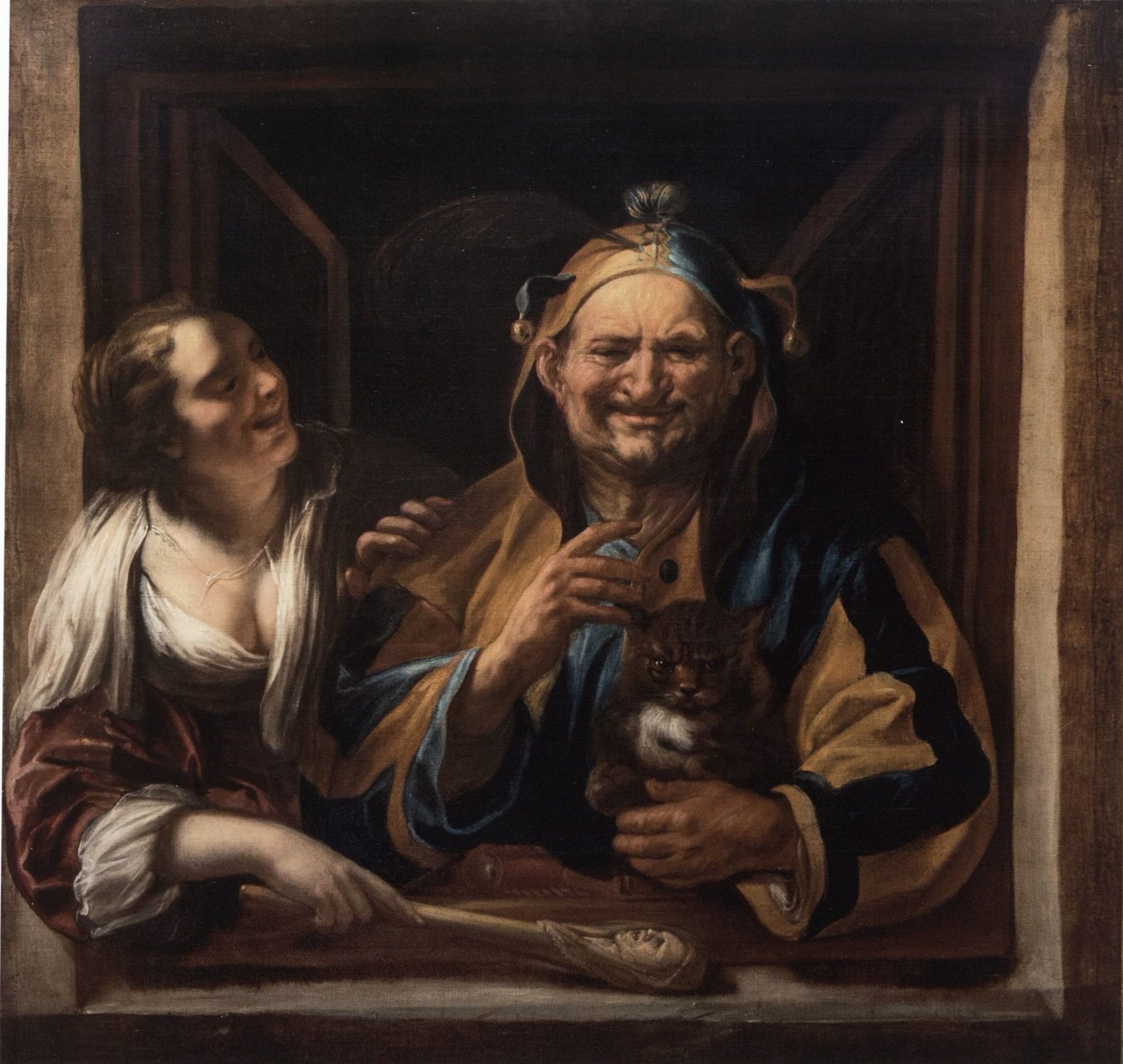JACOB JORDAENS
(Antwerp, 1593 – 1678)
Head of a Cheerful Man Wearing a Cap
Watermark: the arms of Amsterdam
Red, black, and white chalk on paper
5 ⅔ x 4 ½ inches (14.3 x 11.3 cm)
Provenance:
Christie’s, Amsterdam, 1 December 1986, lot 46; where acquired by:
Private Collection, New York
Literature:
Roger Adolf d’Hulst, “Jordaens Drawings: Supplement II,” Master Drawings, vol. 28, no. 2 (1990), pp. 153-156, no. A237a, fig. 17.
Matías Díaz Padrón, Jacob Jordaens y España, Barcelona, 2018, vol. 1, pp. 352-354, fig. 7.
This delightful drawing is the work of Jacob Jordaens, a defining figure of northern Baroque painting. Jordaens was a prolific draughtsman, and, like his contemporaries Peter Paul Rubens and Anthony van Dyck, made numerous preparatory drawings for his paintings—a trend that was becoming increasingly popular among Flemish painters of the day.
This spirited study of an old man laughing heartily was likely drawn from life after a model. Jordaens has masterfully alternated between the black and red chalk to accentuate the old man’s prominent features—sharpening the lines of his eyes, nose, and mouth with quick strokes of the black chalk, and modelling his cheeks and chin by hatching and shading with the red. This drawing is similar in format and style to Jordaens’s study from life for the head of a jester in the Mount Holyoke College Art Museum (Fig. 1),[i] which was used for the figure of the cook in The King Drinks in the Royal Museums of Fine Arts of Belgium.
Fig. 1. Jacob Jordaens, Study for a Cook, Mount Holyoke Museum, South Hadley, Massachusetts.
The present study served as the basis for several grinning figures in Jordaens’s painted oeuvre. The figure is recognizable in the smiling face of Democritus in the artist’s Democritus and Heraclitus (Fig. 2).[ii] In this painting, as in many representations of these two pre-Socratic philosophers, they are shown in the personae of their opposed philosophical positions. Democritus (the “Laughing Philosopher”) laughs at the folly of mankind, while Heraclitus (the “Crying Philosopher”) weeps for it. In another work, Jester, Woman, and Cat in a Window (Fig. 3), Jordaens’s further exaggerated the features of the man in our drawing to create the plump figure of the jester overcome by laughter.[iii] This work was extremely popular, as evidenced by several autograph variants and workshop versions featuring only the jester and his cat.[iv] Jordaens’s image of the jester was also popularized through the print made after his painting by Alexander Voet (Fig. 4). Our model is also found smiling in the upper right of Jordaens’s As the Old Sing, So the Young Pipe formerly in a private collection in Belgium (Fig. 5).
Given the relation of this drawing to these paintings of the 1640s and 1650s, Roger d’Hulst considers it to be a late work of the artist. The drawing may have originally been executed as a preparatory study for one of the paintings cited above. It is clear that the drawing was kept in Jordaens’s workshop, and that he referred to and re-elaborated it when designing several of his painted works.
[i] Roger Adolf d’Hulst, Jordaens Drawings, New York, 1974, cat. no. A 164; http://museums.fivecolleges.
edu/detail.php?museum=all&t=objects&type=all&f=&s=jordaens&record=2.
[ii] Matías Díaz Padrón, Jacob Jordaens y España, Barcelona, 2018, vol. 1, 304-306, cat. no. 47.
[iii] Díaz Padrón, Jordaens y Espana, pp. 348-355, cat. no. 57.
[iv] Ibid.




